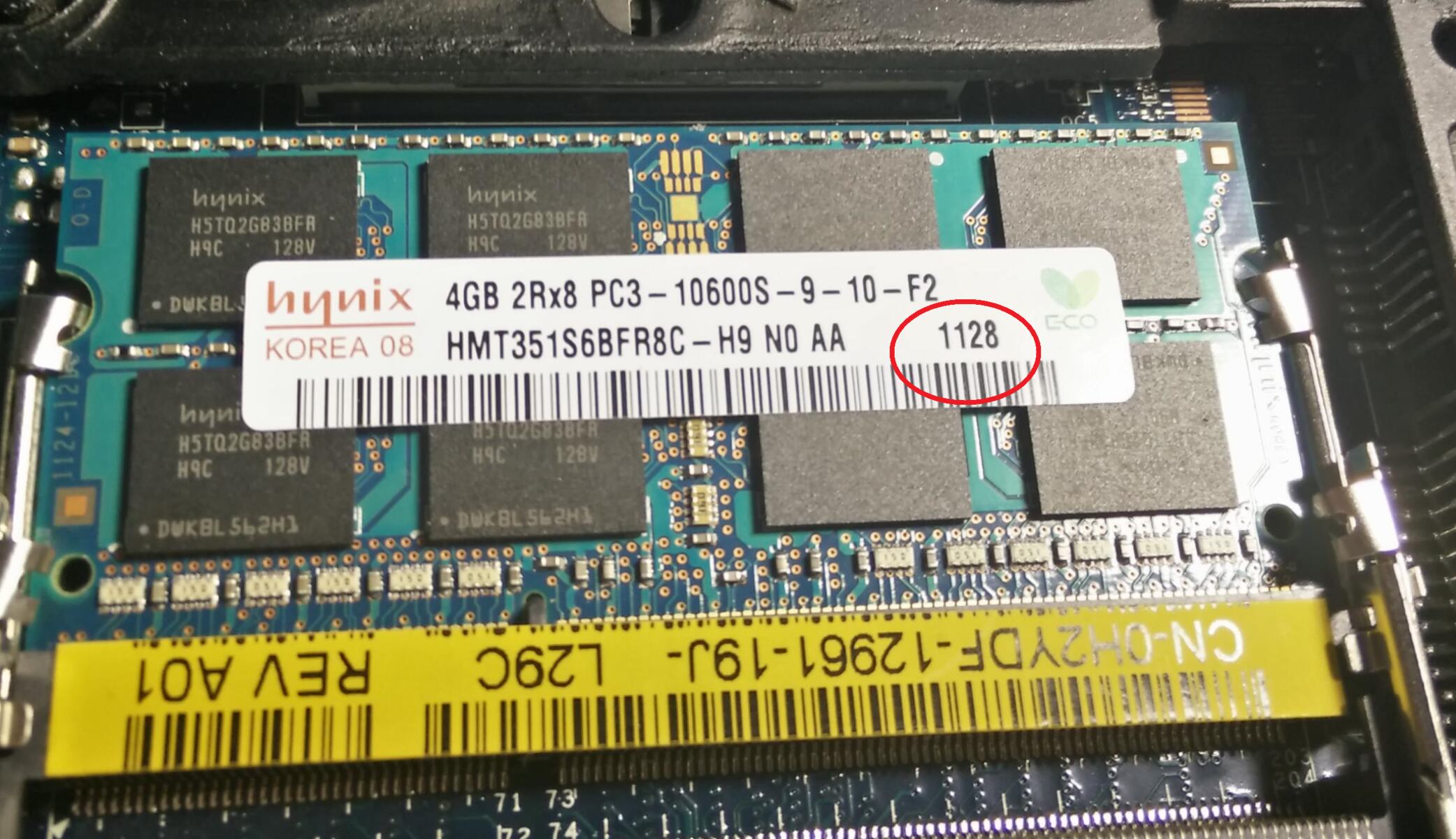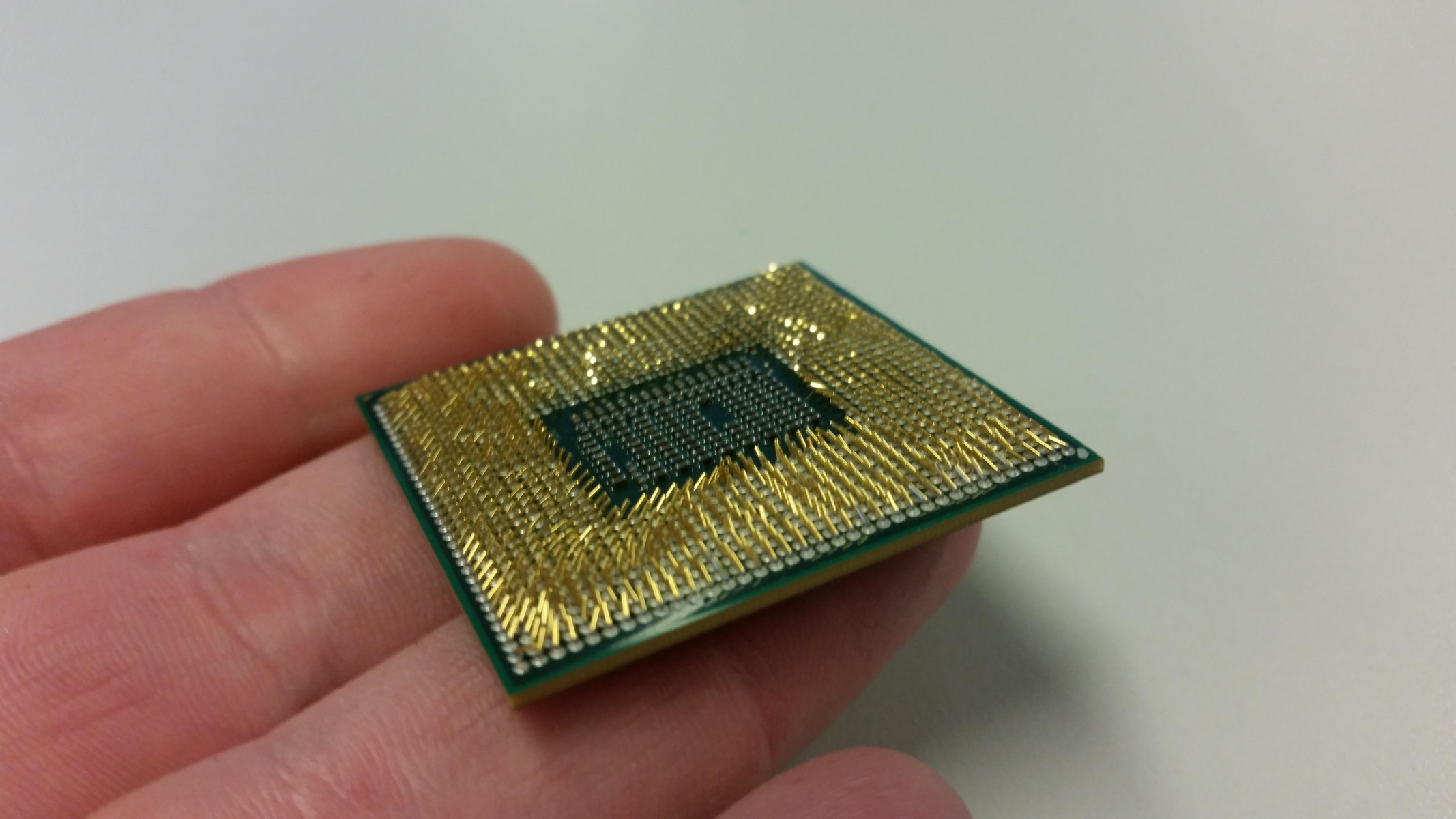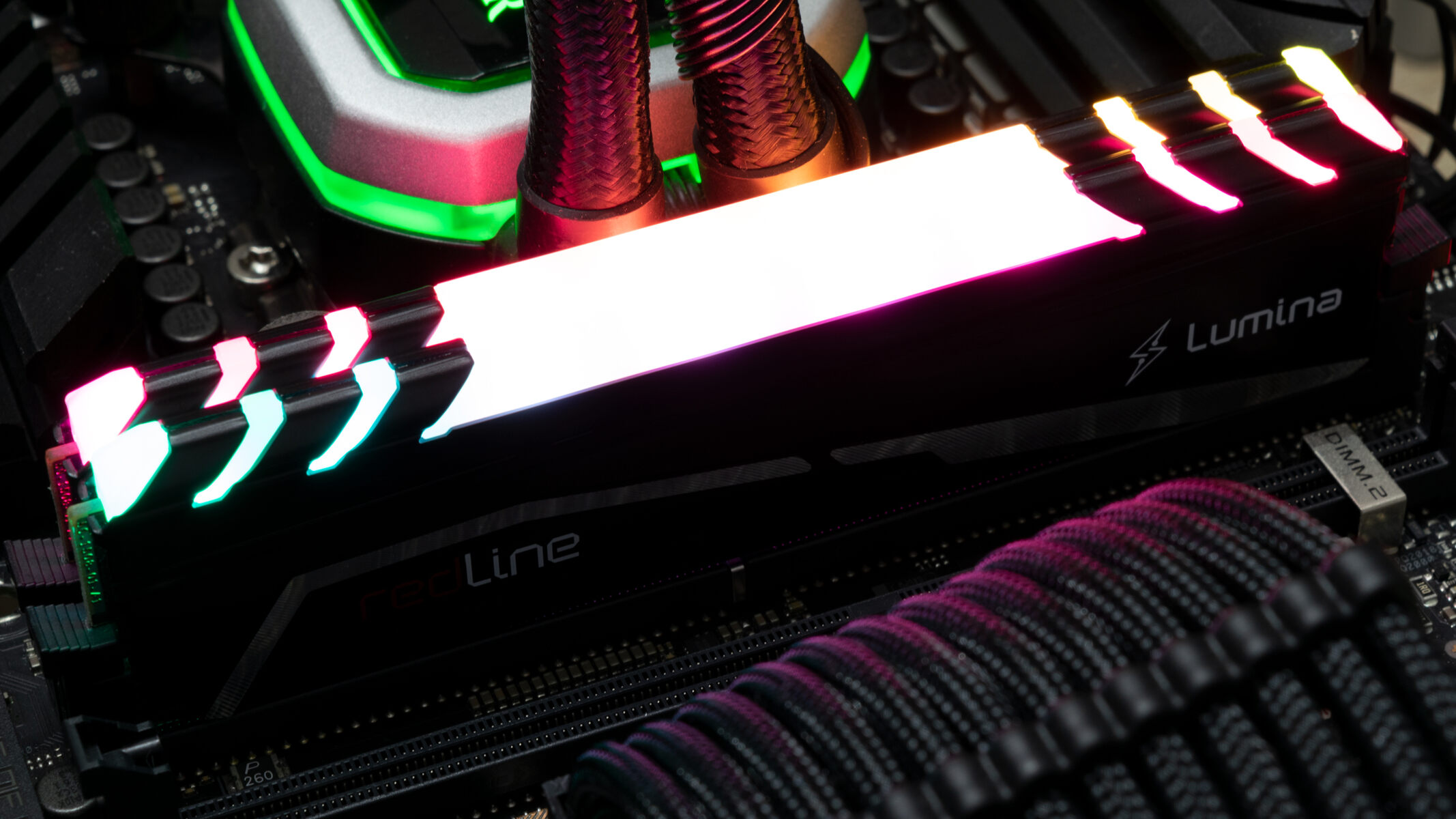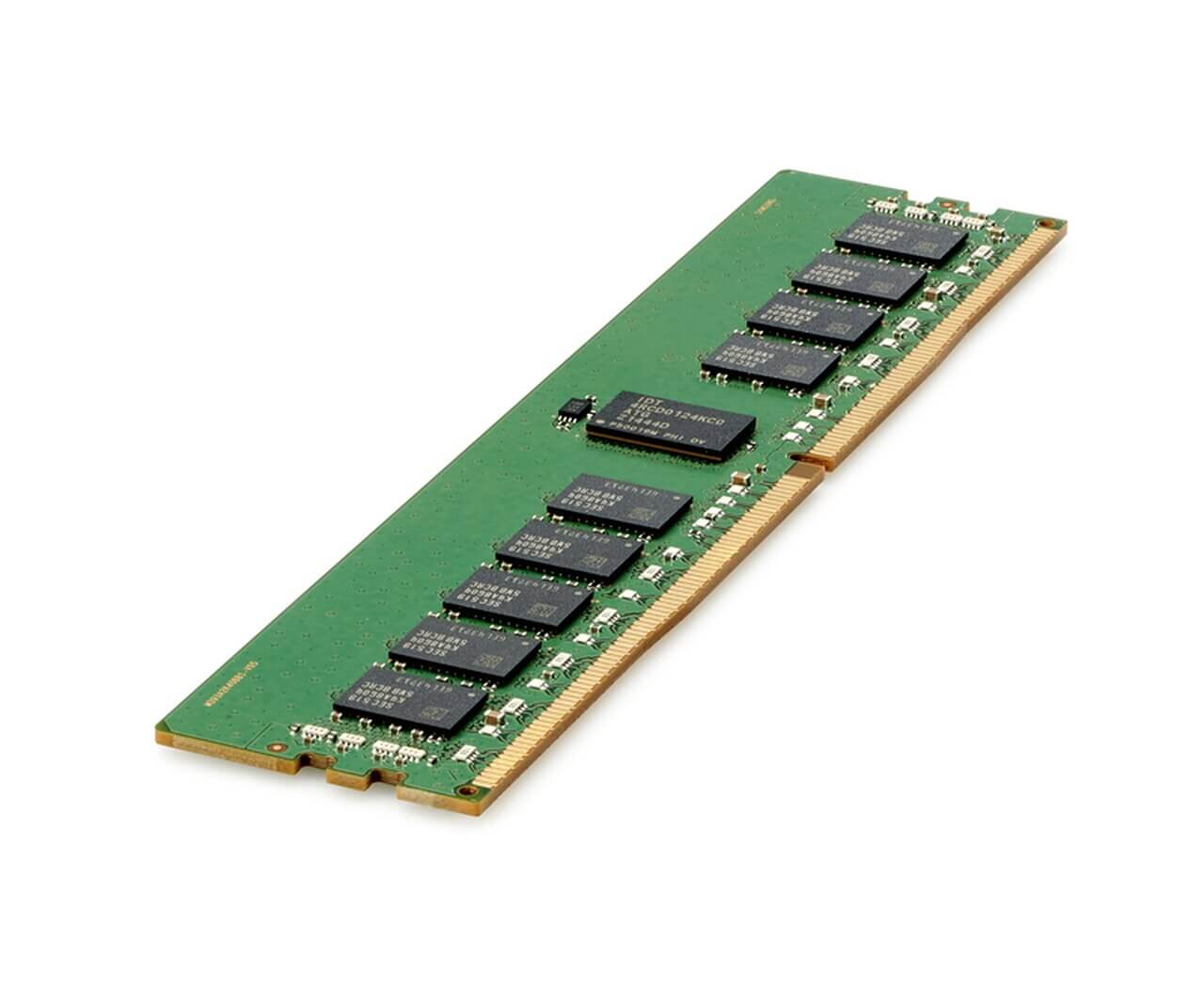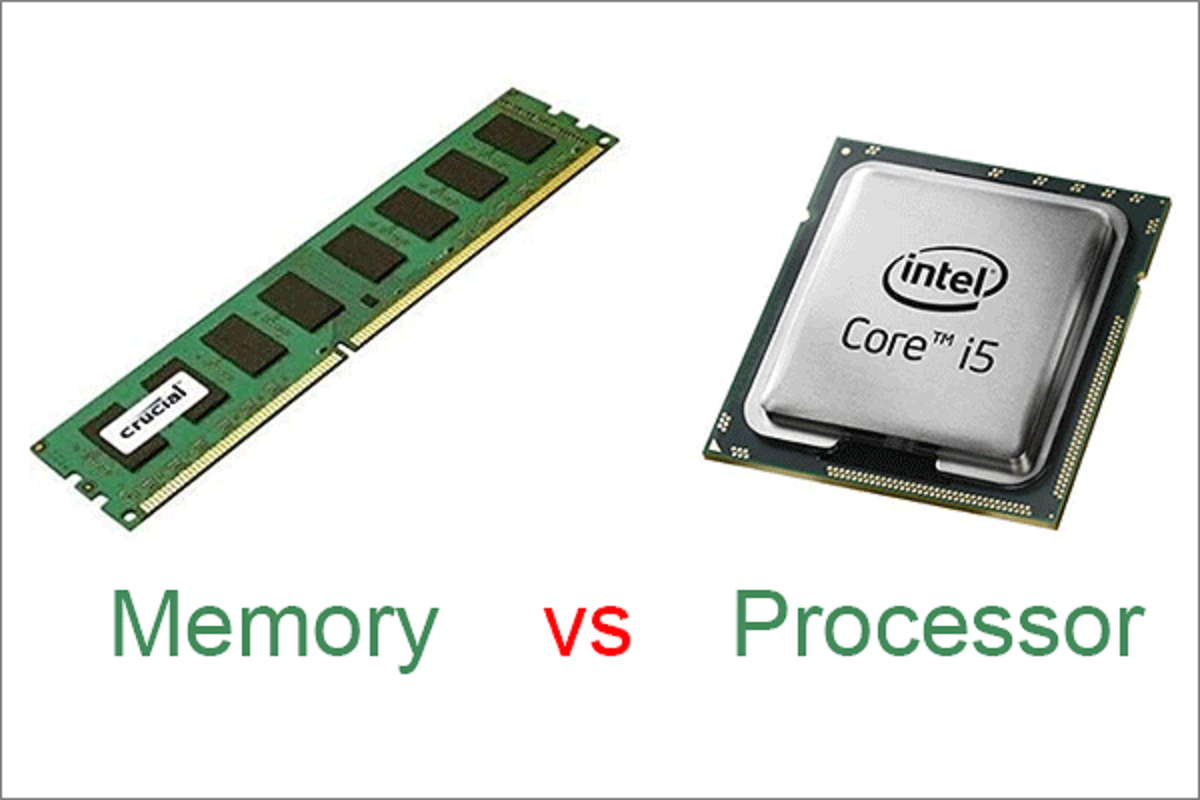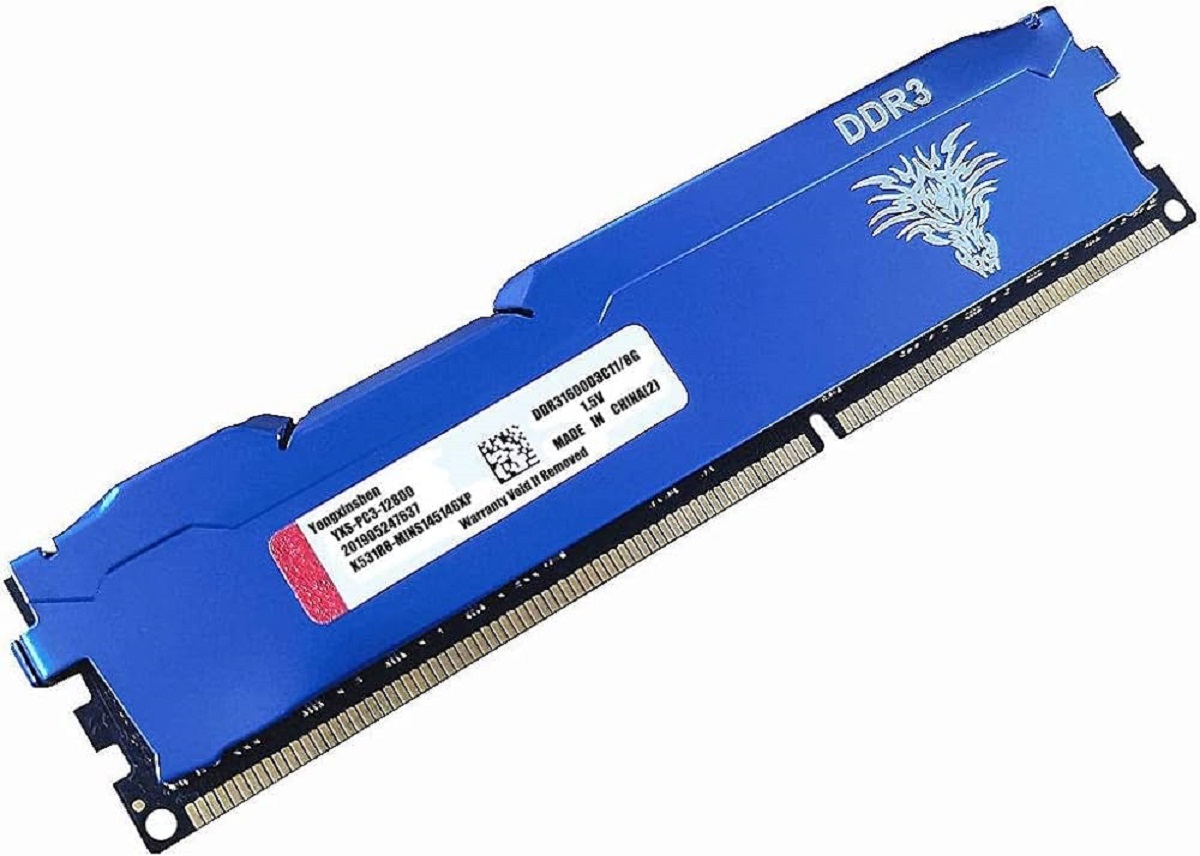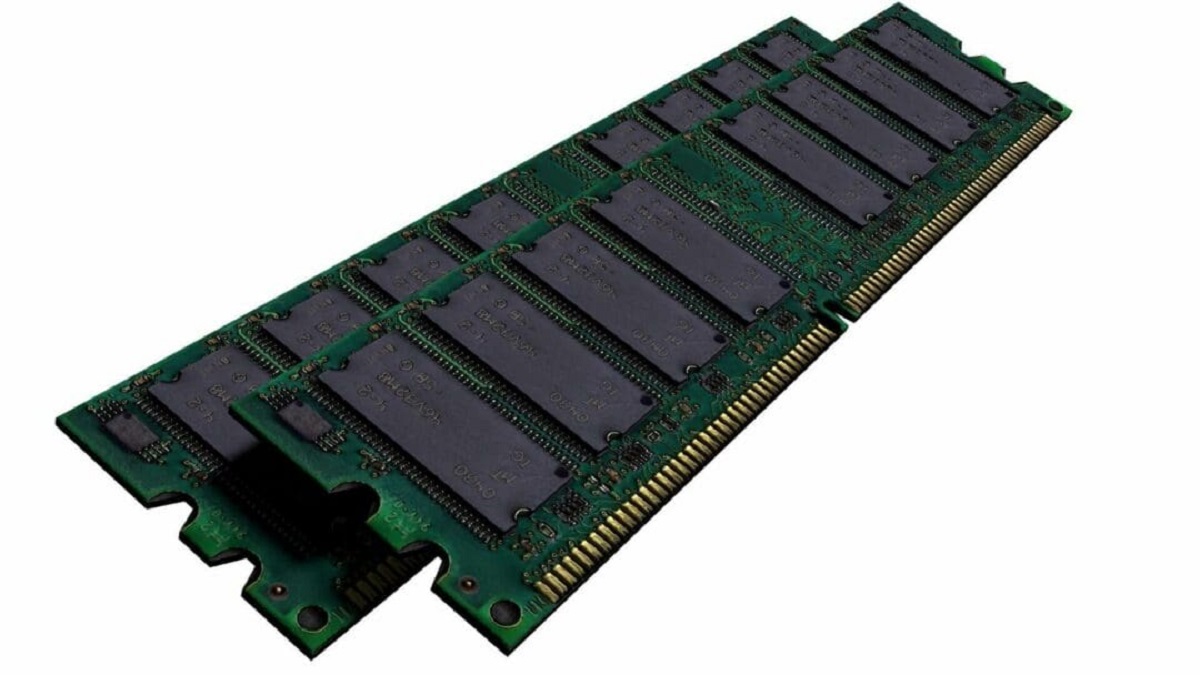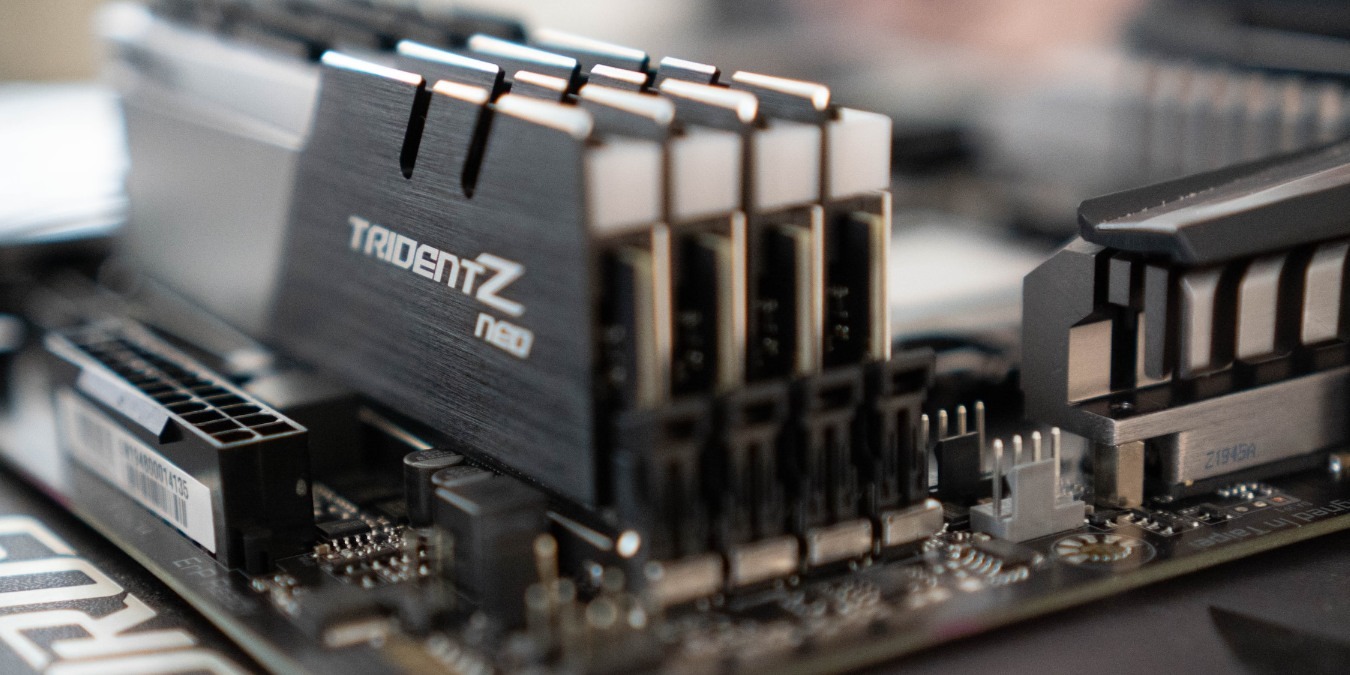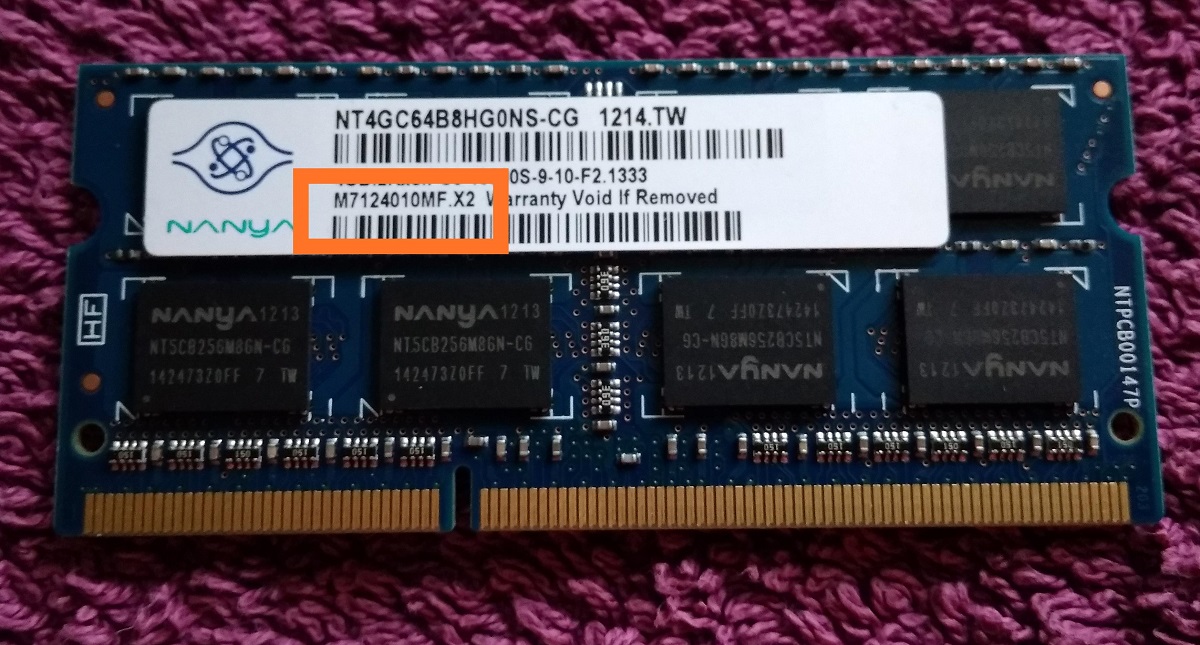Introduction
Welcome to the world of computer memory! If you’ve ever taken a glimpse inside your computer’s hardware, you may have noticed small rectangular chips that are crucial for its operation. These chips are known as RAM (Random Access Memory), and they play a vital role in ensuring that your computer can run smoothly and efficiently.
RAM is considered the short-term memory of a computer, where data is stored temporarily to be accessed quickly by the processor. Without sufficient RAM, your computer may experience sluggish performance, slow loading times, and even crashes when running multiple programs or demanding tasks.
But have you ever wondered what those numbers mean on your RAM memory? What do they signify, and how do they affect the performance of your system? In this article, we will delve into the meaning behind these numbers and explore their significance in the realm of RAM memory.
Before we dive into the details, let’s briefly understand how RAM works and its importance in a computer system.
What is RAM?
RAM, short for Random Access Memory, is a type of computer memory that is essential for the smooth functioning of your computer. Unlike other forms of storage such as hard drives or solid-state drives, RAM is volatile, which means that it loses its data when the computer is powered off.
Rather than storing all of your files and software permanently, RAM is used to store the data and instructions that are actively being used by the computer’s processor. It acts as a temporary workspace where the processor can quickly access and manipulate data during the execution of tasks.
Think of RAM as a temporary scratchpad for your computer. When you open a program or file, the relevant data is copied from your storage device (such as a hard drive) to the RAM. The processor can then retrieve this data from RAM much faster than it could from the storage device, resulting in faster and more efficient operations.
RAM also plays a crucial role in multitasking. When you have multiple programs running simultaneously, each program requires its own space in RAM to store the data and instructions it needs. The more RAM you have, the more programs you can run simultaneously without experiencing a significant decrease in performance.
It’s important to note that RAM is temporary storage and is not intended for long-term storage of your files. When you save a document or exit a program, the data is transferred back to the storage device for permanent storage.
Now that we have a basic understanding of what RAM is, let’s explore how it works and the significance of the numbers found on RAM memory modules.
How does RAM work?
To understand how RAM works, let’s take a closer look at its architecture and functionality. RAM is comprised of small electronic circuits that store data in the form of electric charges. These circuits are organized into millions or billions of tiny cells, with each cell capable of storing a single unit of data, typically represented as a binary digit (0 or 1).
When your computer boots up, the operating system and essential programs are loaded into RAM from the storage device. This allows the processor to quickly access the necessary instructions and data without having to constantly retrieve them from the slower storage device.
RAM is divided into memory cells, each having a unique address that can be accessed individually by the processor. This allows for random access, meaning that the processor can retrieve data from any memory cell at any given time, as long as it knows the memory cell’s address.
When you launch a program or open a file, the relevant data is fetched from the storage device and loaded into the available memory cells in RAM. As the processor executes instructions, it reads and writes data to and from these memory cells, performing operations and calculations. The speed and efficiency of these operations heavily rely on the properties of the RAM.
One important aspect of RAM is its read and write speeds. RAM modules have a specified speed rating that determines how quickly data can be accessed and manipulated. Higher speed ratings result in faster data transfer rates, allowing for quicker execution of tasks and improved overall performance.
Another crucial factor to consider is the latency of RAM. Latency refers to the time delay between when the processor requests data from RAM and when the data is made available. Lower latency values indicate shorter delays and, therefore, faster response times. RAM modules with lower latency values tend to deliver better performance.
In addition to speed and latency, the voltage requirements of RAM modules differ as well. Different RAM modules operate at varying voltage levels, with some requiring more power than others. It’s essential to ensure that the voltage of the RAM is compatible with your computer’s power supply to prevent any compatibility issues or potential damage.
The physical form factor of RAM modules also plays a role, as it determines compatibility with the motherboard. Common form factors include DIMM (Dual In-Line Memory Module) and SO-DIMM (Small Outline Dual In-Line Memory Module), with each having different physical dimensions and pin configurations.
In summary, RAM acts as a temporary storage medium that allows the processor to quickly access and manipulate data. The speed, latency, voltage, and form factor of RAM modules all influence the performance and compatibility of your computer system.
The Purpose of Numbers on RAM Memory
RAM memory modules often have numbers and specifications printed on them, indicating various important factors that define their capabilities. Understanding these numbers is crucial when choosing the right RAM for your computer system. Let’s explore the significance of these numbers and what they represent.
1. Capacity: One of the primary numbers you’ll find on RAM memory modules is the capacity, which is typically measured in gigabytes (GB). This number indicates how much data the RAM module can store at a given time. Common capacities range from 4GB to 32GB or even higher for high-end systems. The greater the capacity of the RAM module, the more programs and files it can handle simultaneously, resulting in smoother multitasking and improved performance.
2. Speed: RAM speed, often referred to as clock speed, is measured in megahertz (MHz) or gigahertz (GHz). It represents how quickly data can be accessed and transferred between the RAM and the processor. Higher RAM speeds result in faster data transfer rates, allowing for quicker execution of tasks and more responsive system performance. It’s important to note that the RAM speed should be compatible with the speed supported by the motherboard to ensure optimal functionality.
3. Latency: RAM latency is measured in cycles and represents the time delay between the moment the processor requests data and when the requested data is made available by the RAM. Lower latency values indicate shorter delays, which result in faster response times and improved system performance. RAM modules with lower latency values are generally preferred for high-performance systems or gaming rigs.
4. Voltage: RAM modules operate at specific voltage levels, indicated by a number. It’s important to ensure that the voltage requirement of the RAM module aligns with the power supply capabilities of your computer system. Using RAM with a different voltage level than supported by the motherboard can lead to compatibility issues or even damage to the components. Therefore, it’s essential to carefully check the compatibility before choosing a RAM module.
5. Form Factor: RAM modules come in different physical form factors, such as DIMM (Dual In-Line Memory Module) and SO-DIMM (Small Outline Dual In-Line Memory Module). The form factor determines the physical dimensions and pin configurations of the RAM module. It’s crucial to choose the correct form factor that is compatible with your computer’s motherboard to ensure a proper fit and functionality.
By understanding the numbers on RAM memory modules, you can make informed decisions when upgrading or purchasing new RAM for your computer. Consider the capacity, speed, latency, voltage, and form factor that align with your system’s requirements to optimize its performance and ensure compatibility.
Capacity
The capacity of RAM refers to the amount of data that can be stored and accessed by the module at any given time. It is typically measured in gigabytes (GB) and is one of the most important specifications to consider when choosing RAM for your computer system.
The capacity of RAM directly impacts the multitasking capabilities of your computer. The more RAM you have, the more programs and files you can have open simultaneously without experiencing a significant decrease in performance. This is because RAM serves as temporary storage for the data and instructions needed by the processor to execute tasks. Having an adequate amount of RAM ensures that the processor can quickly access this data, leading to smoother and more efficient operations.
Having insufficient RAM can cause your computer to slow down and become unresponsive when running multiple programs or memory-intensive tasks. In such cases, the computer may start using the hard drive or solid-state drive as virtual memory, which is significantly slower compared to RAM. This phenomenon is known as “paging” or “swapping,” and it can severely impact overall system performance.
When considering the capacity of RAM, it’s important to assess your specific needs and usage patterns. For basic tasks like web browsing, email, and document editing, 4GB to 8GB of RAM should be sufficient. However, for more demanding applications like video editing, gaming, or running virtual machines, it is recommended to have 16GB or more of RAM to ensure smooth and responsive performance.
It’s worth mentioning that the operating system you’re using also plays a role in determining the optimal RAM capacity. For example, newer versions of resource-intensive operating systems like Windows 10 or macOS may require more RAM to run smoothly. Additionally, certain applications or tasks, such as video editing software or virtualization software, may have minimum RAM requirements specified by the manufacturer.
When upgrading or purchasing RAM, it’s crucial to check the compatibility of the RAM module with your computer’s motherboard and verify the supported maximum capacity. Some older systems may have limitations on the maximum capacity they can support. It’s also a good idea to consider future upgrades or expansions to ensure that the RAM you choose will accommodate your needs down the line.
In summary, the capacity of RAM determines the amount of data that can be processed and stored by the module at a given time. Choosing the right capacity is essential for efficient multitasking and overall system performance.
Speed
The speed of RAM, also referred to as clock speed or frequency, is a critical specification to consider when selecting RAM for your computer system. RAM speed measures how quickly data can be accessed and transferred between the RAM module and the processor.
RAM speed is measured in megahertz (MHz) or gigahertz (GHz) and indicates the number of cycles per second that the RAM can perform. Higher clock speeds result in faster data transfer rates, allowing for quicker execution of tasks and improved overall system performance.
When the processor needs to retrieve data from RAM, it sends a request to a specific memory cell. The RAM module responds by accessing the requested data and transferring it back to the processor. The speed of this transfer is determined by the RAM’s clock speed.
It’s important to note that RAM speed is relative to the maximum speed supported by the computer’s motherboard. If the motherboard supports a maximum RAM speed of, for example, 3200 MHz, using RAM modules with higher clock speeds will result in the RAM being downclocked to match the motherboard’s maximum supported speed. Conversely, using RAM modules with lower clock speeds will not allow the RAM to perform at its maximum potential.
RAM speed can have a noticeable impact on tasks that involve frequent data access and retrieval, such as gaming, video editing, and content creation. These tasks require a high bandwidth of data transfer, and faster RAM can provide a significant performance boost.
It’s important to consider that the practical performance gains achieved through increasing RAM speed may not be as noticeable in everyday computing tasks like web browsing, email, and word processing. These tasks typically involve lower data transfer requirements and do not heavily rely on RAM speed for performance improvements.
When selecting RAM modules for your system, it’s crucial to ensure compatibility with your motherboard. Refer to the motherboard’s specifications and documentation to determine the supported RAM speed and ensure that the RAM you choose falls within that range. Some high-performance systems or overclockable motherboards may support faster RAM speeds, which can provide additional performance benefits if properly configured.
In summary, RAM speed determines how quickly data can be accessed and transferred between the RAM and the processor. Higher RAM speeds can provide significant performance improvements for tasks that involve frequent data access and retrieval, such as gaming and content creation.
Latency
RAM latency refers to the time delay between when the processor sends a request for data to the RAM and when the requested data is made available. It is an important specification to consider when choosing RAM for your computer system, as lower latency values generally result in faster response times and improved system performance.
Latency is measured in cycles and is often represented by a set of four numbers such as CL-tRCD-tRP-tRAS, which stand for CAS Latency, RAS to CAS Delay, Row Precharge Time, and Row Active Time, respectively. These numbers indicate the timing parameters of the RAM module and help determine how quickly the RAM can respond to requests from the processor.
CAS Latency (CL) is the most commonly known and referenced latency value. It represents the time delay between when a command is sent to the RAM module and when the requested data is available for access. Lower CAS Latency values indicate shorter delays and faster response times.
RAS to CAS Delay (tRCD) measures the time it takes for the memory controller to access data from the selected row after the column has been determined. A lower tRCD value means less delay and faster access to data, contributing to improved system performance.
Row Precharge Time (tRP) is the time it takes for the current active row to be deactivated and prepared for the next access. A lower tRP value allows for quicker preparation of the memory cells, reducing delays between successive memory accesses.
Row Active Time (tRAS) is the duration that a memory row remains active. It represents the time within which the memory controller can access the data from a specific row. A lower tRAS value allows for faster read access to data stored in the memory row.
It’s important to note that while lower latency values generally indicate better performance, the overall impact on system performance may vary depending on the specific use case. In some tasks, the impact of latency may be more noticeable and beneficial, while in others, the difference may be negligible.
When choosing RAM modules, it’s crucial to balance the lower latency values with other important factors such as capacity and cost. Higher-performance RAM modules typically come with lower latency values, but they might also be more expensive. Therefore, it’s essential to consider your specific needs and budget before making a decision.
Additionally, it’s important to verify the compatibility of the RAM module with your motherboard. Some older motherboards or specific CPU architectures may have limitations on the supported latency values, and using RAM modules with incompatible latency specifications may result in system instability or failure to boot.
In summary, RAM latency refers to the time delay between the processor’s request for data and the availability of the requested data. Lower latency values generally lead to faster response times and improved system performance, but it’s important to consider the balance between latency, capacity, and cost when selecting RAM modules.
Voltage
Voltage is an essential consideration when selecting RAM for your computer system. RAM modules operate at specific voltage levels, and it’s crucial to ensure that the voltage requirement of the RAM aligns with the power supply capabilities of your computer.
RAM modules typically require a standard voltage level, such as 1.2 volts (V) or 1.35 volts (V), commonly referred to as DDR3 or DDR4 voltages, respectively. These voltage levels are designed to provide the necessary power for the RAM module to function correctly and reliably.
Using RAM modules with incorrect voltage requirements can lead to compatibility issues and potential damage to your computer system. If the voltage provided by your computer’s power supply does not match the required voltage of the RAM module, it can result in unstable system performance, crashes, or even permanent damage to the RAM or other components.
Before purchasing RAM modules, it’s essential to consult your computer’s documentation or motherboard specifications to determine the supported voltage levels. Additionally, manufacturers often provide compatibility lists or guides that specify the RAM modules known to work well with their motherboards.
It’s also worth noting that some high-performance RAM modules may have the ability to operate at both standard voltage levels and higher voltage levels for overclocking purposes. These modules are often marketed as “XMP” (Extreme Memory Profile) or “Overclocking” RAM and offer enthusiasts the ability to push their RAM beyond the standard specifications. However, it’s important to ensure that your motherboard supports the higher voltage levels and to follow proper overclocking procedures to avoid damaging your system.
Furthermore, it’s essential to ensure that other components, such as the CPU and motherboard, are compatible with the specific RAM voltage level you choose. In some cases, certain CPU architectures or motherboards may only support specific voltage levels, and using incompatible RAM could result in system instability or failure to boot.
Checking the voltage compatibility of the RAM is crucial, especially when upgrading or building a new system. It’s recommended to double-check the specifications, consult the manufacturer’s documentation, and seek guidance from reputable sources to ensure compatibility and prevent any potential issues.
In summary, voltage compatibility is a crucial aspect to consider when selecting RAM modules for your computer system. Ensuring that the RAM module’s voltage requirements align with your computer’s power supply capabilities is essential to maintain stability and prevent damage to your system.
Form Factor
The form factor of RAM refers to the physical dimensions and pin configurations of the RAM module. It is an important consideration when choosing RAM for your computer system to ensure compatibility with your motherboard.
There are different form factors of RAM modules available in the market, with the most common ones being DIMM (Dual In-Line Memory Module) and SO-DIMM (Small Outline Dual In-Line Memory Module).
DIMM: DIMM modules are the standard form factor used in desktop computers and servers. These modules are larger and have more pins compared to SO-DIMM modules. DIMM modules come in various sizes, such as DDR3 and DDR4, and have different notch positions to prevent installation in incompatible slots. When selecting DIMM RAM, ensure that it matches the correct form factor, such as DDR3 or DDR4, and is compatible with your motherboard’s memory slot configuration.
SO-DIMM: SO-DIMM modules are smaller in size and primarily used in laptops, small form factor PCs, and certain compact motherboards. Their smaller physical footprint makes them more suitable for space-constrained environments. SO-DIMM modules have fewer pins compared to DIMM modules and come in DDR3 and DDR4 variants as well. When choosing SO-DIMM RAM, it is essential to ensure compatibility with your laptop or small form factor PC and verify the correct DDR version.
It’s crucial to note that DIMM and SO-DIMM RAM modules are not interchangeable. They have different physical dimensions and pin configurations, preventing one from being used in a slot designed for the other. Installing incompatible RAM can lead to damage to the module, motherboard, or other components.
When selecting RAM based on form factor, it’s important to consider the specifications and limitations of your computer system. Check the motherboard documentation or manufacturer’s website for the supported RAM form factors and capacities. Additionally, make sure to verify the memory slot configuration of your motherboard to determine if it supports DIMM or SO-DIMM modules.
In some cases, there may be different physical designs within the same form factor. For example, in DIMM form factor, you may come across variants such as UDIMM (Unbuffered DIMM) and RDIMM (Registered DIMM). These variants have different memory controller compatibility and may not be interchangeable. It’s important to consult your motherboard documentation or manufacturer for specific form factor compatibility details.
In summary, the form factor of RAM refers to the physical dimensions and pin configurations of the RAM module. Choosing the correct form factor, such as DIMM or SO-DIMM, is crucial to ensure compatibility with your motherboard and prevent damage to the RAM or other components. Be sure to consult your motherboard’s specifications and documentation to determine the supported form factor and select the appropriate RAM module accordingly.
Conclusion
RAM memory is a crucial component of your computer system, acting as the short-term storage that allows the processor to quickly access and manipulate data. Understanding the numbers and specifications on RAM memory modules is essential when choosing the right RAM for your system, as they provide insights into various important factors.
The capacity of RAM determines how much data can be stored and accessed at a given time. It directly impacts multitasking capabilities and overall system performance. Consider your specific needs and usage patterns to choose an appropriate capacity, ranging from 4GB to 32GB or higher.
RAM speed or clock speed is another critical factor. Higher speeds result in faster data transfer rates and improved system responsiveness. Ensure that the RAM speed aligns with the maximum supported speed of your motherboard for optimal performance.
Latency, measured in cycles, represents the time delay between the processor’s request for data and its availability. Lower latency values lead to faster response times and improved performance. Consider latency values like CAS Latency (CL), RAS to CAS Delay (tRCD), Row Precharge Time (tRP), and Row Active Time (tRAS) when selecting RAM modules.
Pay attention to the voltage requirements of the RAM. Ensure compatibility with your computer’s power supply to prevent compatibility issues or damage to the system. Check the supported voltage levels of your motherboard and choose RAM modules accordingly.
Lastly, consider the form factor of the RAM module, such as DIMM or SO-DIMM, to ensure a proper fit with your motherboard’s memory slots. Different form factors have specific physical dimensions and pin configurations that are not interchangeable.
By understanding the purpose of the numbers on RAM memory modules and considering these specifications, you can make informed decisions when upgrading or purchasing RAM for your computer system. Selecting the right RAM will optimize performance, enhance multitasking capabilities, and ensure compatibility with your motherboard, ultimately providing a smoother and more efficient computing experience.







